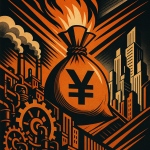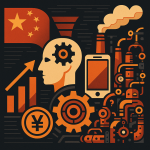Chinese tech stocks are back in the headlines after Cathie Wood’s ARK Invest bought stakes in Alibaba and Baidu.
Key Points
- High-profile buys: 凯西·伍德‘s ARK (via ARKW and ARKF) bought 阿里巴巴 ADRs worth about $16,300,000 USD (¥119,000,000 RMB); ARK’s day‑total China buys were roughly $21,000,000 USD (¥153,300,000 RMB), and ARK’s 百度 position is now about $47,000,000 USD (¥343,100,000 RMB).
- Investment thesis: ARK cites a persistent valuation gap (Chinese tech often trading at roughly half the multiples of U.S. peers) and improving AI/cloud execution—notably 阿里云 growth and Alibaba’s planned ¥3,800亿 AI infrastructure buildout.
- Implication — signal, not proof: The trades are a meaningful market signal that could spur re‑rating if backed by sustained ETF flows, clear AI monetization, and manageable macro/regulatory risk; but execution and policy risks remain material.

Quick summary — what happened
Cathie Wood (Kāixī Wǔdé 凯西·伍德) and ARK Invest (Fāngzhōu Tóuzī 方舟投资) made notable China-related trades on September 22, 2025.
Two ARK ETFs — ARKW (ARK Next Generation Internet ETF) and ARKF (ARK Fintech Innovation ETF) — together bought Alibaba ADRs worth about $16,300,000 USD (¥119,000,000 RMB, using 1 USD = ¥7.3 CNY for conversions).
Earlier coverage summarized the day’s total China-related buys as roughly $21,000,000 USD (¥153,300,000 RMB).
ARK also increased its position in Baidu (Bǎidù 百度), bringing ARK’s total holdings in Baidu to about $47,000,000 USD (¥343,100,000 RMB).

Resume Captain
Your AI Career Toolkit:
- AI Resume Optimization
- Custom Cover Letters
- LinkedIn Profile Boost
- Interview Question Prep
- Salary Negotiation Agent

Why this move matters for investors and markets
Cathie Wood is known for concentrated, forward-looking bets on disruptive technology, and her re-entry into Alibaba (Ālǐbābā 阿里巴巴) is notable because ARK fully exited the stock in September 2021.
This trade signals that at least one high-profile global growth investor may be reassessing Chinese tech valuations and opportunity sets.
ARK’s public rationale revolves around two main themes:
- Valuation gap.
Chinese tech firms often trade at materially lower multiples than U.S. peers, which ARK views as roughly half on comparable metrics, creating potential asymmetric upside for long-term growth investors. - AI and vertical integration.
Companies like Alibaba and Baidu have moved from concept to execution on AI initiatives, combining software, cloud, data, and hardware in ways ARK targets.

Evidence of execution — Alibaba, cloud, and AI infrastructure
Alibaba Cloud (Ālǐyún 阿里云) has reported accelerating revenue growth in recent results.
Alibaba publicly promoted multi-hundred-billion-yuan infrastructure plans for AI at its Cloud Summit in Hangzhou.
The company cited a target figure of ¥3,800亿 RMB for AI-related buildout as part of its infrastructure ambition.
If these investments convert into scalable cloud and AI revenue, they would support ARK’s growth-and-profit narrative for the stock.

Find Top Talent on China's Leading Networks
- Post Across China's Job Sites from $299 / role, or
- Hire Our Recruiting Pros from $799 / role
- Qualified Candidate Bundles
- Lower Hiring Costs by 80%+
- Expert Team Since 2014
Your First Job Post

ARK’s broader China exposure — not just Alibaba and Baidu
ARK’s China-related holdings include other names tied to AI, EVs, and intelligent mobility, such as BYD (Bǐyàdí 比亚迪), Pony.ai (Xiǎomǎ Zhìxíng 小马智行), and JD Logistics (Jīngdōng Wùliú 京东物流).
The pattern suggests ARK is broadening exposure to companies where software, hardware, and large-scale data/compute converge.

ExpatInvest China
Grow Your RMB in China:
- Invest Your RMB Locally
- Buy & Sell Online in CN¥
- No Lock-In Periods
- English Service & Data
- Start with Only ¥1,000

How to read the signal — cautious optimism and the risks
This trade is meaningful for market psychology because a high-profile investor re-entering major Chinese tech names can accelerate re-rating dynamics when fundamentals and AI monetization improve.
But several risk factors remain that could limit a durable repricing:
- Macroeconomic and policy risk.
Global macro conditions, U.S.–China relations, and domestic regulatory frameworks all affect Chinese tech multiples. - Execution risk.
Large infrastructure spending on AI data centers must eventually show returns and monetization, not just scale. - Market liquidity and flows.
Repricing requires sustained capital flows; a few ETF trades can move sentiment but don’t guarantee durable valuation changes.

What this means for different audiences
For investors:
Treat the move as a signal to re-evaluate exposure and thesis, not as a timing call.
For founders and operators:
Expect increased investor focus on AI commercialization, cloud revenue mix, and unit economics linked to AI infrastructure spend.
For marketers and analysts:
Track announcements around AI monetization, cloud pricing, and partnerships that can turn scale into recurring revenue.

Actionable takeaways — how to monitor this story
- Watch quarterly cloud revenue and AI service growth for Alibaba (Ālǐyún 阿里云) and productized AI revenue for Baidu (Bǎidù 百度).
- Track capital deployment versus tangible monetization timelines for large AI infrastructure projects, including the ¥3,800亿 RMB buildout Alibaba cited.
- Follow ETF flows and institutional filings for evidence that buying trends are sustained beyond headline trades.
- Monitor geopolitical and regulatory developments that could re-steepen valuation discounts or widen the gap with U.S. peers.

Bottom line — signal, not proof (yet)
Cathie Wood’s purchases are a strong signal that at least some global growth investors see asymmetric upside in select Chinese tech names, especially those positioned to monetize AI at scale.
Whether this marks a durable repricing or a high-conviction, niche trade will depend on execution, macro stability, and continued capital recognition of China’s AI leaders.
What do you think — is this the start of a broader re-rating for Chinese AI leaders, or a niche trade by a high-conviction fund manager?
Chinese tech stocks remain a story to watch as AI, cloud, and investor flows collide at scale.




